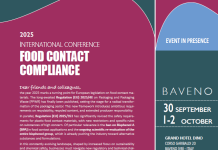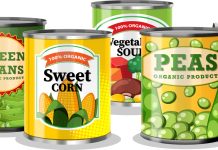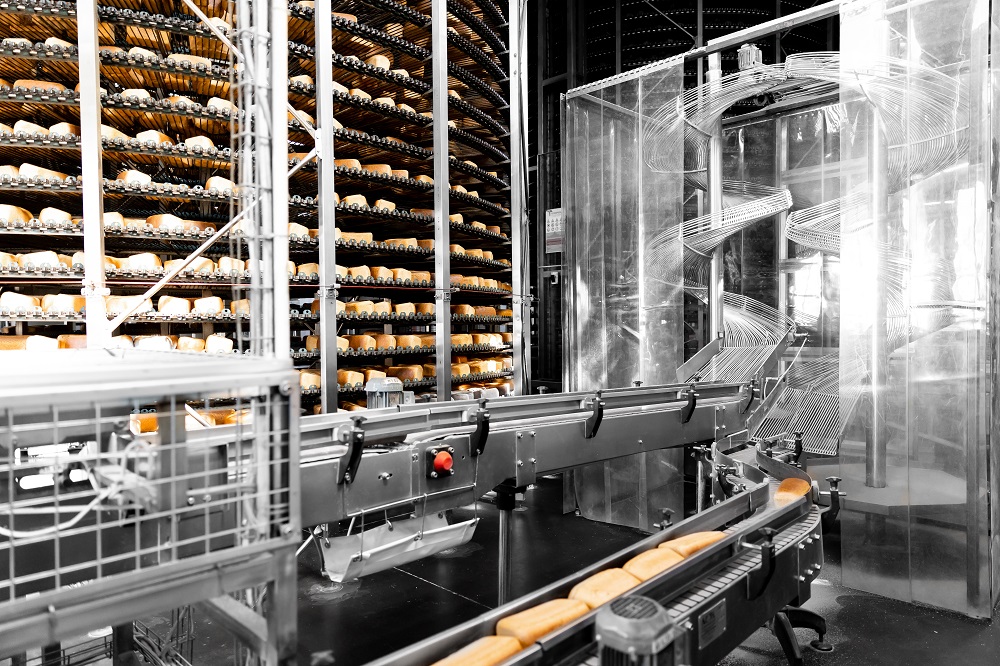 Line automation, optimal control of parameters such as temperature and relative humidity, innovative ingredients make the bakery sector one of the most technologically advanced in the food industry.
Line automation, optimal control of parameters such as temperature and relative humidity, innovative ingredients make the bakery sector one of the most technologically advanced in the food industry.
The bakery sector is a major exporter, covering 40% of production. The most significant costs are those of raw materials, mainly due to the availability of common wheat worldwide, and of packaging, mainly as regards packaging processes. Domestic consumption is mainly in the area of bread substitutes and biscuits, as well as industrial confectionery.
Alongside large companies, there is a number of small and medium sized companies, with a concentration of supply located mainly in northern Italy. Competition between the different industrial realities is based on price, novelties, promotions, formats and packaging. The bakery sector is characterized by a high degree of mechanization and automation, partial or complete, of individual machines and entire production lines.
Implementation of Industry 4.0 in the production of bakery products
Production lines automation allows a precise and reliable control and a greater product traceability. The design of the industrial part, the information system, the machines and the plants is becoming an important milestone for all bakery companies, even more so for those manufacturing products dedicated to persons suffering from food intolerances, gluten-free and lactose-free products, but also for organic food producers.
Automation and computerization of the production lines provide a more reliable prevention of contamination by gluten and non-organic ingredients. With the remote control of machines such as planetary mixer, dosing machine and the rotary ovens, it is possible to collect data on production traceability and to operate and switch off the machine with a programming appropriate to the production cycle.
For example, the oven can be turned on ahead of the production time. It is also possible to track the output and the performance of each machine. Automated and mechanised operations include production control, regulation and management. The level of automation and mechanization in the bakery sector is also increasing due to the need for production specialisation and fast production lines.
Release agents
Release agents have the task of facilitating the demoulding of the product. This operation is essential, because it allows to obtain a homogeneous product, reduce processing times and cut processing costs. Release agents are positioned between the metal container and the bakery product.
They can be: oil that acts as a carrier without releasing action; waxes with release and thickening power; emulsifiers that improve the product shelf life and prevent its oxidation; water that serves as a thickening agent together with waxes and components with antioxidant function.
Among the most widely used vegetable oils there are rapeseed and sunflower oil, which contains numerous unsaturated fatty acid chains and is heat-resistant; and palm oil, which is mainly used to improve oxidation stability and minimize the carbonization effect.
Vegetable waxes are mixtures of esters, alcohols, saturated acids with a chain from 14 to 30 carbon atoms. These are natural substances of plant origin, such as Carnauba wax, which is obtained from the leaves of a palm, liquid waxes or wax mixtures used for their releasing power.
Plant emulsifiers are used to produce an emulsion between two otherwise immiscible liquids. The most commonly used is lecithin from rapeseed oil (E322). The choice of a release agent depends on several parameters. It is essential, for example, to evaluate the oxidative properties of the release agent; therefore, prefer those with oils stable at temperature, oxygen and light or with antioxidants.
Otherwise, the baked product may have unpleasant smells and flavors. In this case it is also important to assess the oil smoke point, i.e. the temperature at which the oil begins to produce a white smoke.
Another parameter to take into account in the selection of the release agent are its adhesion properties, i.e. that the release agent adheres to the mould walls and does not slide on the bottom. The result would be a frying effect at the base of the baking product, and a difficult extraction of the baked good from the mould.
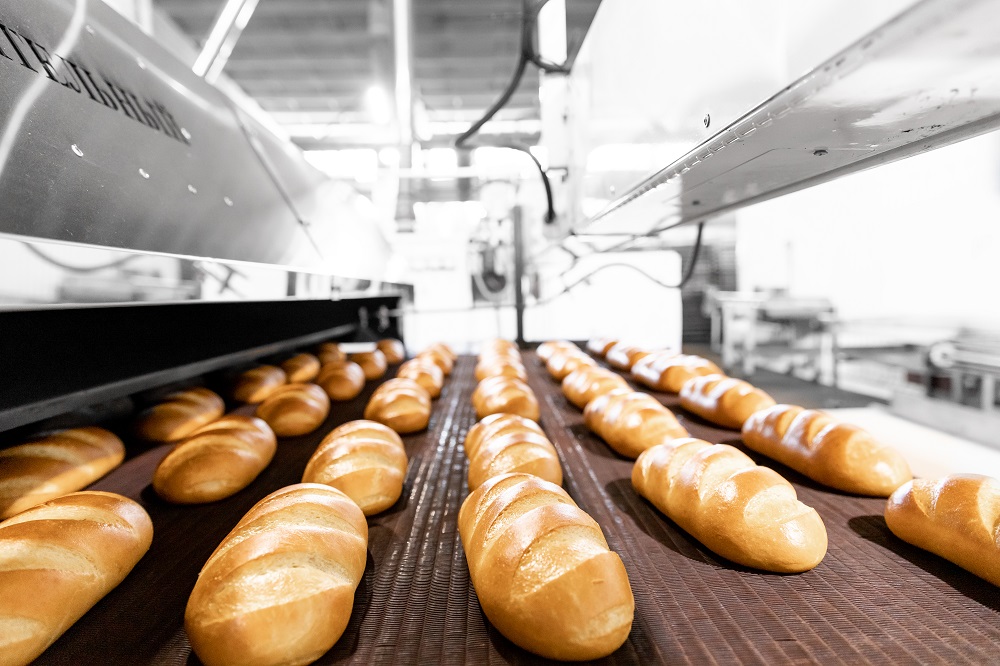 Innovative technological solutions for enriched bakery products
Innovative technological solutions for enriched bakery products
More and more bakery products are enriched with useful substances to counteract or supplement nutritional deficiencies. Some ingredients such as iron adversely affect the organoleptic characteristics of the bakery products in which they are included or make it more difficult to digest or absorb.
For this reason, different microencapsulation technologies have been studied in order to improve the digestibility of these compounds. Sorbic acid (E200), used in natural yeast mixtures to inhibit the proliferation of molds and yeasts, is also microencapsulated. If this is not the case, it may limit leavening, significantly reducing the volume of the product. The microencapsulation in a protective film leaves the ascorbic acid intact until it is released in the cooking phase.
Artificial intelligence, blockchain and 5G
Artificial intelligence, blockchain, and 5G can be used to track the entire bakery production chain, from cultivation to sale to the final consumer, to improve raw material quality standards, and to reduce environmental impact. 5G sensor systems installed in cereal fields, on the factory and in-store allow to track and monitor all production phases through data and images.
Predictive models, computer vision and machine learning process in real time the data collected in the field and in-house, while the blockchain ensures product traceability throughout the production chain. All this for the benefit of farmers, suppliers, distributors and end consumers. Farmers can receive real-time information that is essential for a successful harvest, while bakery producers can monitor the crop stage by viewing the data.
Sensors installed along the production line, 5G video analysis and neural networks allow the evaluation of various production parameters, such as the pH levels of the dough, the evolution of leavening, baking, packaging and so on. Moreover, thanks to the Blockchain technology, the consumer, thanks to the receipt, can access all the data collected during the production and the entire supply chain, with a focus on the traceability, authenticity and quality of the product.
Delayed bread baking
Postponed or delayed baking techniques are used to stop the production process, thanks to deep freezing, and, only when necessary, to complete the baking for sale. In fact, it is possible to pre-bake the product before freezing it. Once thawed, the baking process can be completed.
However, in order to obtain a quality finished product, appropriate technologies must be applied throughout the production process, from forming to deep freezing. The success of the process depends on several factors, first of all the management of the pre-baking phase. The formation of smaller sizes, the technologies to prevent the loss of moisture, the use of some functional ingredients, such as improvers, that help to optimize the appearance and quality of the finished product, also play an important role.
Delayed baking is possible thanks to the fermentation chambers, able to delay the fermentation of the dough thanks to the use of low temperatures. The product can be frozen after forming, after final leavening or after pre-baking. The latter is the most widely used delayed baking technique. Cooking is blocked when the dough begins to form a thin crust, before colouring.
The products are then deep-frozen and the final baking takes place only before sale. If some precautions are not taken, the products may have defects, such as the crust breaking off from the soft part of the bread if the pre-baking is too long, or collapse if the pre-baking is insufficient. It has been seen that loaves with too much volume are less suitable for this technique, precisely because they risk falling apart. This defect can be reduced by the combined use of improvers, such as hydrocolloids that retain water by limiting the drying of the dough.
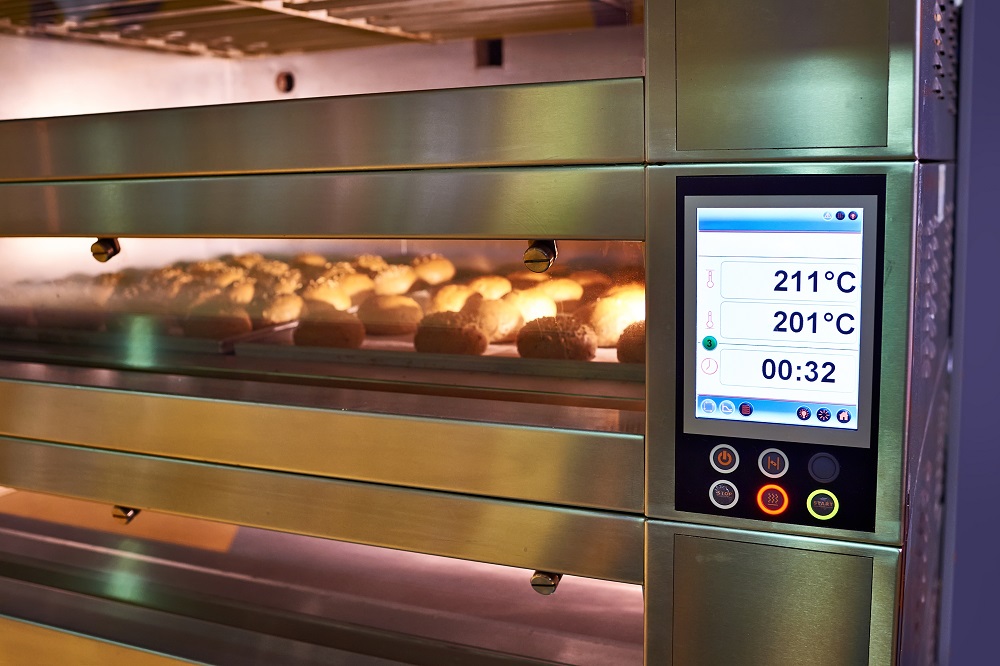 Temperature and humidity under control
Temperature and humidity under control
Humidity and temperature monitoring is particularly important in the production of bakery products, especially in automated production lines. Too low moisture before forming hinders leavening. If, on the other hand, it is too high, there is a risk of increased microbial proliferation.
In food, the water activity, i. e. water free of particular bonds with other constituents, available for chemical and biological reactions, but also for micro-organisms, can be controlled with additives, such as humidifying agents, suitable packaging systems and favourable storage conditions. The water activity value of a product is balanced with that of the surrounding environment.
This is why it is important to measure its level in all parts of a product and the surrounding environment. Monitoring of water activity, or even the relative humidity, and temperature is important during the whole production process, during leavening, to ensure optimal environmental conditions for dough growth, and baking. Modern ovens use ventilation systems equipped with humidity and temperature sensors.
Data loggers are instruments that measure and record temperature and/or humidity data. On the market there are compact, waterproof, wireless versions, able to transmit data remotely and with a large internal memory able to record a lot of data. Companies also have humidity and temperature probes that can operate even at high temperatures such as those of ovens and dryers.
Transmitters are devices that can also support two probes for the measurement of the same parameter or two different parameters at the same time. These instruments must be stable, reliable and accurate, but also easy to use and set up.
Spray technology for bakery products
The automated spray technology can be used for the glazing of bread, sandwiches and pastries, the coating of sugar or chocolate, the application of viscous materials, of alcohol, to guarantee a uniform coating, to eliminate the waste of ingredients and optimize the application. It can also be used to wash eggs, lubricate moulds, clean equipment, apply mold inhibitors to prolong the shelf life of products.
Modern systems have a hygienic design, a technology that ensures high application accuracy, easy cleaning and limited maintenance. These are pump or pressure vessel systems. Automation makes it possible to instantly adjust the flow rate and then control the dosage, depending on changes in line speed or other operating conditions.
Temperature is also constantly monitored. Some nozzles spray cooling air, very useful option after applying chocolate or sugar syrup to biscuits, confectionery products, nuts, almonds etc. Pressure sensors allow continuous monitoring of the working pressure. The nozzles are adjustable so as to spray only on the products.

